
Update June 01, 2009: added two more non-typical presumed Band-winged Dragonlets - both from the LRGV - to the bottom of this page:
Update: added pics of the 2nd individual taken by Greg Lasley, showing the veination on the prepared specimen - at the bottom.
These two young male Dragonlets Erythrodiplax are both presumably Band-winged umbrata, but show wing veination typical of Black-winged funerea:
Note: both are now specimens destined for John Abbott at UT .
1)
this individual was found on the Resaca Vieja Trail, Bentsen State Park WBC, Hidalgo county, Texas on October 9, 2008:
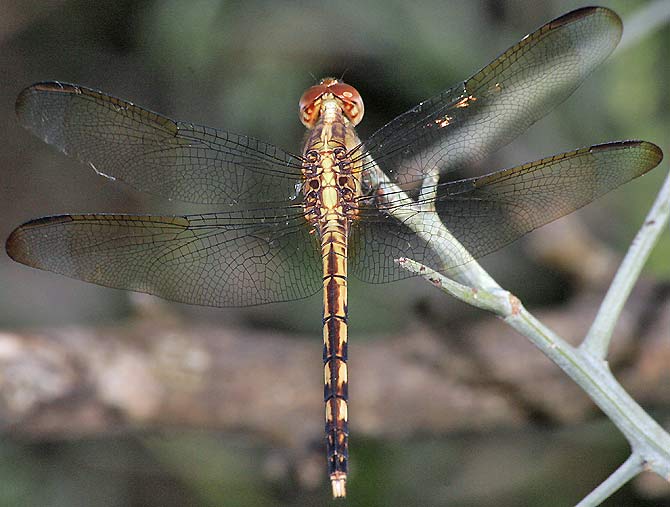
Note below the split cells in the radial (= R) and median (= M) planates: 3 of the 4 medians have two split cells while the 4th has three split cells; two of the radials actually have a double-split cell (i.e. three rows) :

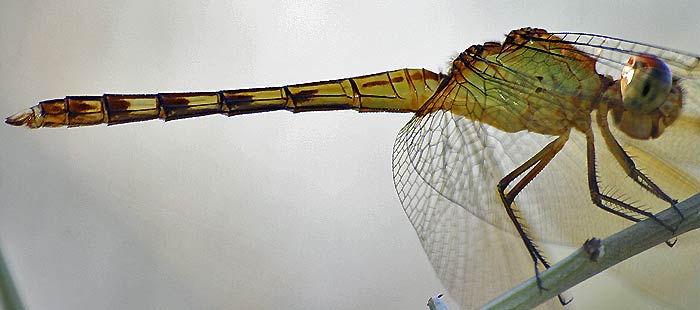
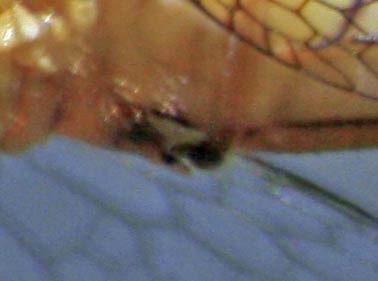

2) this individual was found 4 miles east of Sana Ana NWR along the wooded bank of the Rio Grande, Hidalgo county, Texas on October 10, 2008:

Note on the right wings below the split cells in the radial (= R) and median (= M) planates: one median has two split cells while the other has three split cells; both of the radials actually have two double-split cells (i.e. three rows) :
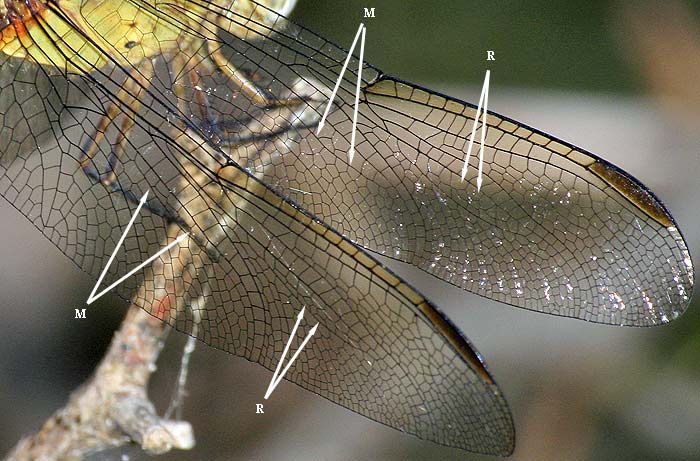
The following two photos are by Greg Lasley, soon after he had prepared the specimen:
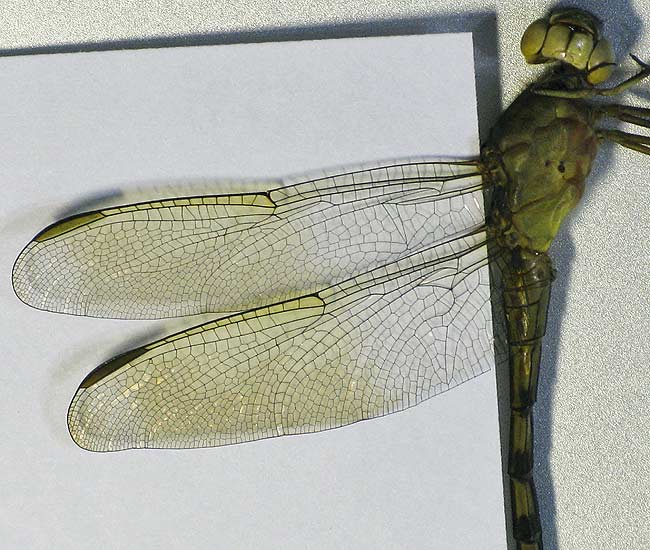
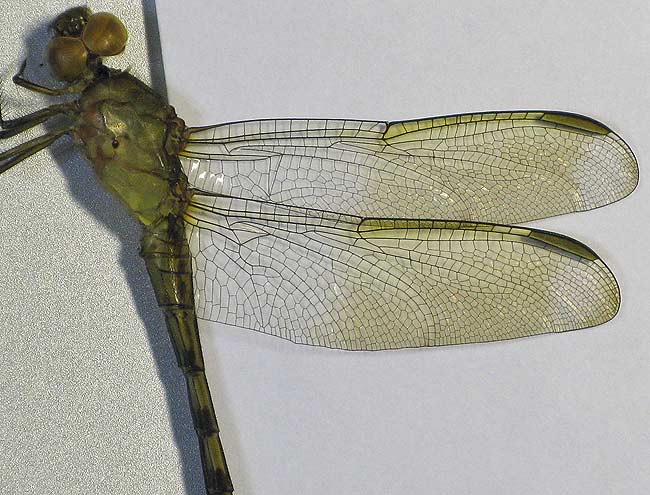
Update June 01, 2009: two more unusual E. umbrata from the lower Rio Grande Valley in May 2009:
This mature female has split cells in three of the four medians:
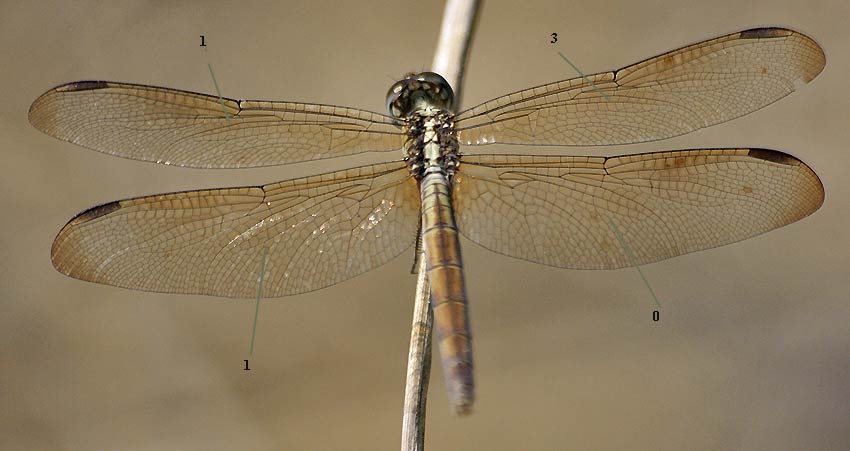
Yet this young female has almost no split cells in the radials:
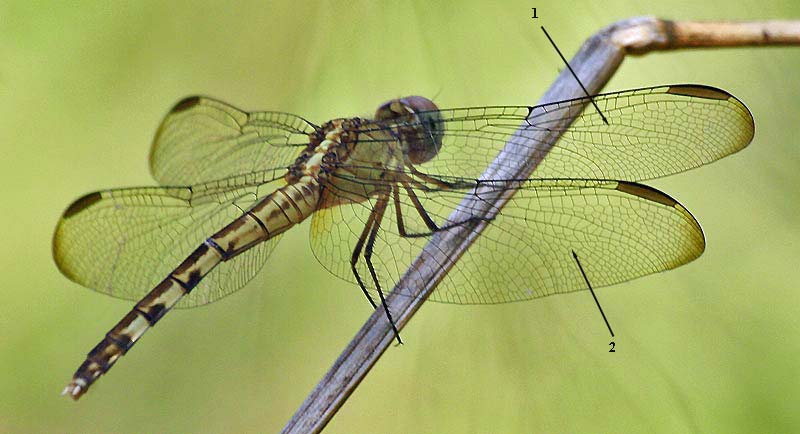
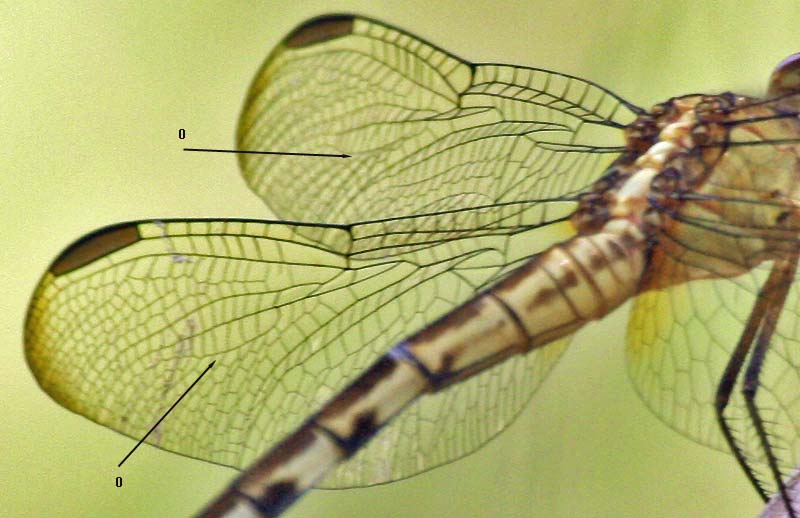
- I have studied this element of wing veination in literally hundreds of E. umbrata in the field and have never seen this variation in the split cells in the medians and radials until recently, and only close to the Mexican border; is it just size-related and I'm seeing abnormally large (and one abnormally small!) individuals...?